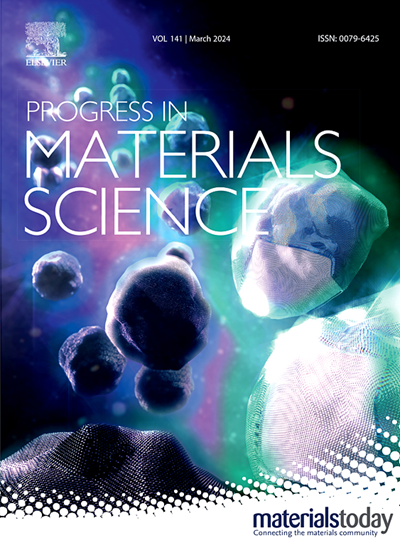从废锂离子电池中优先回收锂:相变机制、技术创新和未来展望
IF 40
1区 材料科学
Q1 MATERIALS SCIENCE, MULTIDISCIPLINARY
引用次数: 0
摘要
锂是新能源产业可持续发展不可缺少的元素。然而,市场对锂电池的强劲需求导致锂资源短缺。从废锂中回收锂是缓解锂短缺的有效途径。然而,锂离子化合物都是人工合成的复杂材料,相变是选择性高效提取锂不可或缺的途径。相变方法可分为液相锂选择性浸出法和固相锂优先萃取法两种。本文系统总结了现有的选择性回收锂的方法,并从热力学角度分析了锂的相变机理。分析了液相法选择性提取锂的环境影响和经济效益。创新性地采用“反应选择性原理”对主要固相转变方法进行了评价,表明相变控制对提高锂回收率和选择性的重要性。最后,从技术创新、全过程优化、经济效益和环境友好四个维度对锂回收的发展前景进行了展望。本文旨在从相变的角度为废旧lib的高效回收利用提供参考和启示,助力新能源产业的健康、长远发展。本文章由计算机程序翻译,如有差异,请以英文原文为准。
Towards preferential lithium recovery from spent lithium-ion batteries: phase transition mechanisms, technical innovation and future perspectives
Lithium is an indispensable element for the sustainable development of the new energy industry. However, the strong market demand for LIBs has led to a shortage of lithium resources. Recycling lithium from spent LIBs is an effective approach to alleviate the lithium shortage. However, LIBs are all artificially synthesized complex materials, and phase transition is an indispensable pathway to extract lithium selectively and efficiently. The phase transition methods can be divided into two types: lithium selective leaching in the liquid phase and lithium preferential extraction in the solid phase. This review systematically summarizes the available methods for selective lithium recovery and analyzes the phase transition mechanism from a thermodynamic perspective. The environmental impact and economic benefits analysis were presented for selective lithium extraction methods in liquid phase systems. Innovatively, the “reactivity-selectivity principle” was first employed to evaluate the main solid phase transition methods, indicating the importance of phase transition control for higher lithium recovery efficiency and selectivity. Finally, the prospects of lithium recycling development were outlined from four dimensions of technological innovation, entire-process optimization, economical efficiency and environmental friendliness. This review aims to provide references and enlightenment for the efficient recycling of spent LIBs from the perspective of phase transition and assist in the healthy and long-term development of new energy industry.
求助全文
通过发布文献求助,成功后即可免费获取论文全文。
去求助
来源期刊

Progress in Materials Science
工程技术-材料科学:综合
CiteScore
59.60
自引率
0.80%
发文量
101
审稿时长
11.4 months
期刊介绍:
Progress in Materials Science is a journal that publishes authoritative and critical reviews of recent advances in the science of materials. The focus of the journal is on the fundamental aspects of materials science, particularly those concerning microstructure and nanostructure and their relationship to properties. Emphasis is also placed on the thermodynamics, kinetics, mechanisms, and modeling of processes within materials, as well as the understanding of material properties in engineering and other applications.
The journal welcomes reviews from authors who are active leaders in the field of materials science and have a strong scientific track record. Materials of interest include metallic, ceramic, polymeric, biological, medical, and composite materials in all forms.
Manuscripts submitted to Progress in Materials Science are generally longer than those found in other research journals. While the focus is on invited reviews, interested authors may submit a proposal for consideration. Non-invited manuscripts are required to be preceded by the submission of a proposal. Authors publishing in Progress in Materials Science have the option to publish their research via subscription or open access. Open access publication requires the author or research funder to meet a publication fee (APC).
Abstracting and indexing services for Progress in Materials Science include Current Contents, Science Citation Index Expanded, Materials Science Citation Index, Chemical Abstracts, Engineering Index, INSPEC, and Scopus.
 求助内容:
求助内容: 应助结果提醒方式:
应助结果提醒方式:


